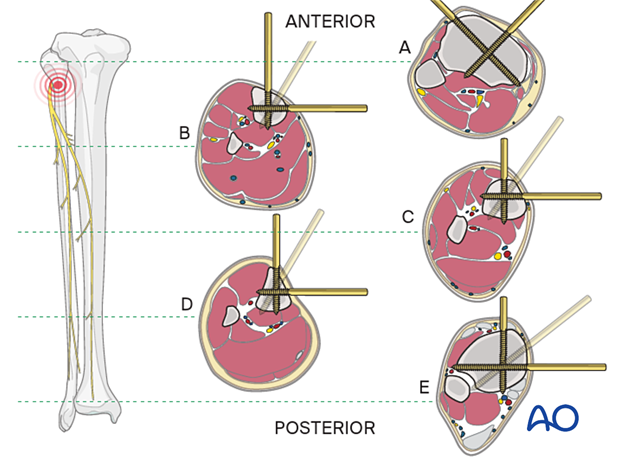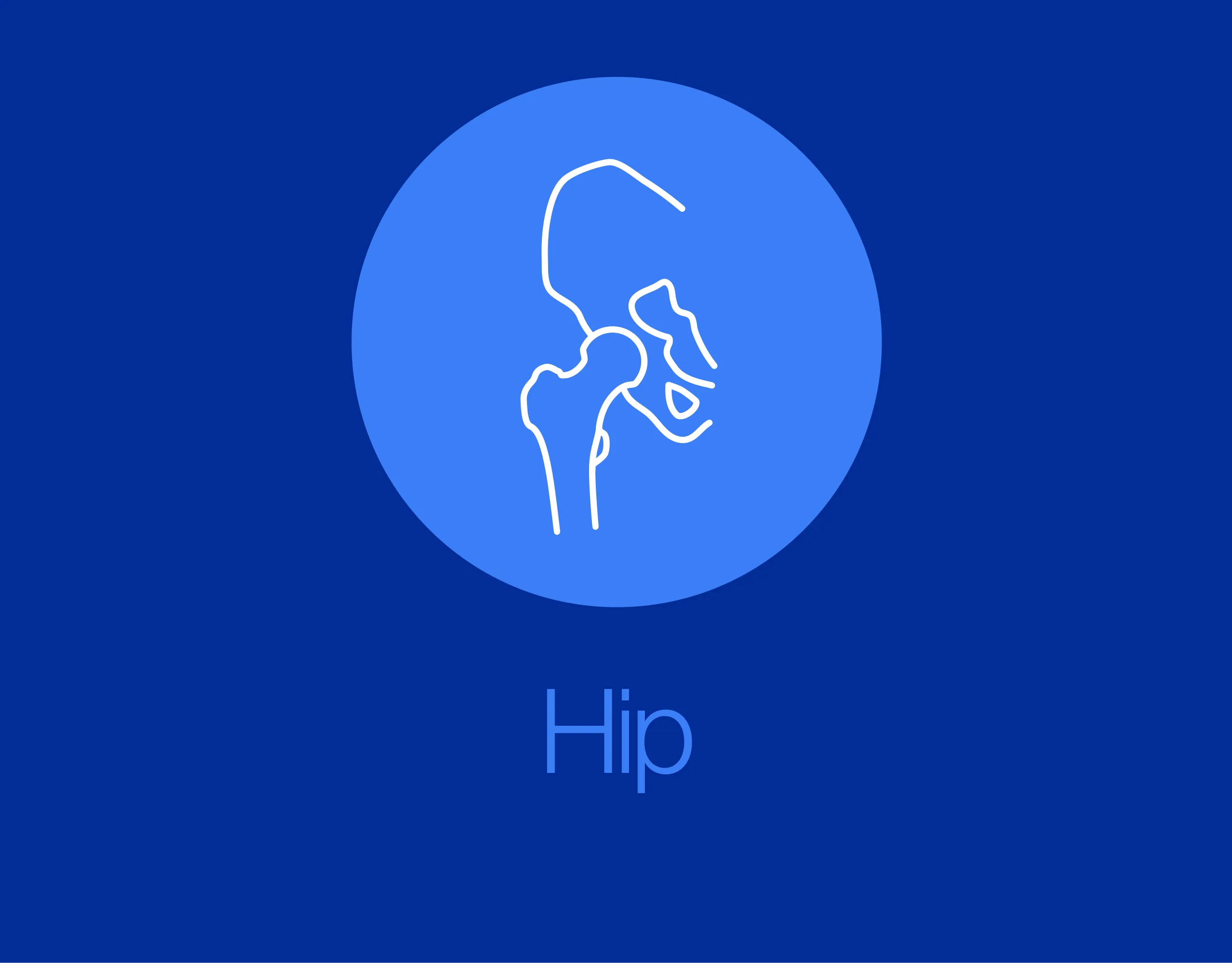Safe zones in the tibia for wire and Schanz screw insertion
1. General consideration
Inserting percutaneous instrumentation through safe zones reduces the risk of damage to neurovascular structures.
Wire insertion in the tibia
Wires for ring fixators range from 1.5-2.0 mm in diameter depending on the patient's size and the clinical scenario.
Three types of wire can be inserted in the tibia:
- transverse
- tibiofibular
- medial face
This illustration presents safe zones for wire insertion at five locations in the tibia.
Even when working in a safe zone, safe wire insertion technique should be adhered to, specifically wires should be oscillated or tapped when traversing dangerous locations to avoid neurovascular injury.

Schanz screw insertion in the tibia
In general, the entire anteromedial face of the tibia is safe for Schanz screw insertion. At the proximal metaphysis this safe zone extends to the border of the anterior compartment. The tibial tubercle distal to the insertion of the patella tendon is also safe for Schanz screw insertion. Because of the proximity of neurovascular structures, care should be taken to avoid over-penetrating the Schanz screws on insertion. Only one or two threads of the pin should extend past the far cortex.
In cross section D, the anterior crest of the tibia can be quite thick and dense. Particular care should be taken to make sure this is a bicortical pin and thermal injury is strictly avoided.














